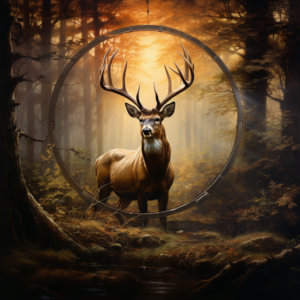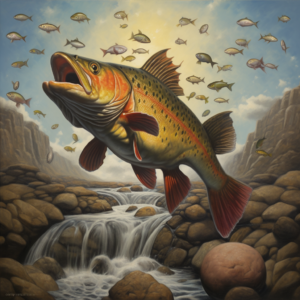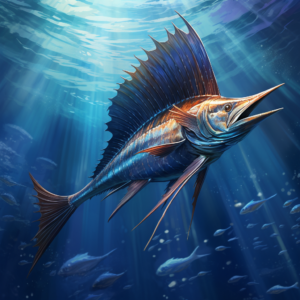One essential aspect of bass fishing is understanding the behavior of the fish. By knowing their habits and patterns, you can choose the best fishing spots and increase your chances of catching that elusive trophy fish. We’ll discuss this in more detail in the next section. Additionally, having the right equipment can make a big difference in your success. We’ll cover the essential gear you need and how to choose the right equipment based on your budget and needs.
Next, we’ll delve into the nitty-gritty techniques used in bass fishing, including casting and retrieving. These techniques are essential for hooking a big bass and will help you become a more successful angler. The type of bait and lures you use can also make a big difference in your success. We’ll explore different types of bait and lures and provide tips on how to use them effectively.
Finally, we’ll guide you in finding the best fishing spots for bass, including lakes, rivers, and ponds. Knowing how to read water conditions and structure will help you pinpoint the most productive areas. By following these techniques and tips, you can increase your chances of catching a big bass and have a successful fishing trip. Remember, bass fishing requires patience and practice. Don’t get discouraged if you don’t catch a fish right away. With time, you’ll become a more skilled angler and increase your chances of catching that big one. So, grab your fishing gear and get ready to improve your bass fishing skills! Ready to learn more? Let’s dive into understanding bass behavior.
Understanding Bass Behavior
One of the most critical elements of bass behavior to understand is their feeding habits. Bass are opportunistic feeders, meaning they will eat whatever food source is most readily available to them. This can include insects, crayfish, small fish, and even other bass. However, bass tend to be most active and aggressive during certain times of the day, particularly in the early morning and late afternoon.
Another important factor to consider when targeting bass is their preferred habitat. Depending on the time of year and water conditions, bass can be found in a variety of locations, including shallow water near the shore, deep water near underwater structures, or in the middle of an open lake or river. You can increase your chances of finding bass by looking for areas with cover, such as rocks, logs, or weeds, which provide hiding places and a source of food.
Overall, understanding bass behavior is a fundamental aspect of successful fishing. By studying their feeding habits, preferred habitats, and other behaviors, you can choose the right lures and techniques and increase your chances of catching a big bass.
Essential Fishing Gear
Fishing Rods
Fishing Reels
Fishing Line
Fishing Hooks
Fishing Accessories
By investing in high-quality fishing gear that suits your preferences and needs, you’ll be able to enjoy bass fishing to the fullest. Take the time to research and choose the right fishing gear, and you’ll increase your chances of catching a big one.
Mastering Bass Fishing Techniques
Casting Techniques
Once you have the right gear, practice your casting technique. Keep your elbow in and use your wrist to flick the bait or lure forward. Aim for a smooth, fluid motion, and be sure to release the line at the right moment. With practice, you’ll be able to make accurate casts and reach the fish that are hiding in the best spots.
Retrieval Techniques
– Slow rolling: This technique involves reeling in the lure slowly and steadily, allowing it to bump along the bottom.
– Jerking: Jerking the bait or lure up and down can create a natural-looking motion that attracts the attention of nearby bass.
– Twitching: Twitching the bait or lure can also create a realistic movement that mimics prey.
Experiment with different retrieval techniques and speeds until you find what works best for the conditions and your target fish.
Topwater Techniques
– Poppers: These lures have a concave face that creates a popping sound when jerked, mimicking the sound of prey on the surface.
– Buzzbaits: Buzzbaits have a propeller that spins as you retrieve, creating a buzzing noise that attracts bass.
– Frogs: Frog lures mimic the movement of a real frog, tempting bass to strike.
To use topwater techniques effectively, choose the right lure for the conditions and work it with a steady, rhythmic retrieve. Be patient, as it may take some time for a bass to strike.
Deep Water Techniques
– Jigging: Jigging involves using a weighted lure that bounces up and down along the bottom, mimicking the motion of a crawfish or other prey.
– Carolina rigging: Carolina rigging involves using a leader with a bead and a sinker to allow your bait to float above the bottom.
– Drop shotting: Drop shotting involves suspending your bait or lure above the bottom with a sinker, allowing for a more natural presentation.
Whatever technique you use, be sure to vary your retrieval speed and style until you find what works best for the conditions and your target fish. With practice and patience, you’ll be able to master the art of bass fishing and reel in the big one.
Selecting the Perfect Bait and Lures
Consider the Time of Day
Match the Hatch
Use Natural Colors
Size Matters
Focus on Presentation
Final Thoughts
Locating the Best Fishing Spots
When you’re on the water, keep an eye out for signs of bass activity, such as jumping fish or water disturbances. These can help you locate areas where bass are feeding and increase your chances of a successful catch. Pay attention to water temperature, too, as bass are more active in warmer waters.
Another way to find good fishing spots is to talk to local anglers and bait shops. They can provide valuable insider information about the best fishing spots in the area. Don’t be afraid to ask for advice or tips on where to fish.
Remember, finding the right fishing spot is key to a successful bass fishing trip. Take the time to do your research, and be patient – sometimes even the best spots may not produce a catch right away. Keep experimenting and trying different areas until you find the perfect spot.
Tips for Spotting the Best Fishing Spots
When searching for the ideal bass fishing spot, keep in mind these tips:
– Look for areas with underwater structures, like rocks or logs, where bass can hide and feed.
– Watch for signs of bass activity, like jumping fish or water disturbances.
– Check the water temperature – bass are more active in warmer waters.
– Ask local anglers and bait shops for advice on the best fishing spots in the area.
By using these tips and taking the time to research and explore different fishing spots, you can greatly increase your chances of catching a big bass. So, get out there and start exploring – you never know what might be lurking in the waters.
Conclusion
Now that you have learned about the techniques and strategies for catching a big bass, it’s time to put your knowledge into practice. Remember, fishing requires patience, so don’t get discouraged if you don’t catch anything right away.
Make sure you have the essential fishing gear, including a reliable fishing rod and reel. Practice different casting and retrieval techniques until you find the ones that work best for you. And don’t forget to choose the right bait and lures based on the time of day and water conditions.
Locating the best fishing spots is also essential. Look for areas with cover, such as weeds, rocks, and fallen trees, as these are likely hiding places for bass.
Happy Fishing!
FAQ
Q: What are some basic bass fishing techniques for beginners?
A: Some basic bass fishing techniques for beginners include casting and retrieving, using different types of bait and lures, and locating areas with underwater structure where bass are likely to hide.
Q: How can I improve my bass fishing skills?
A: To improve your bass fishing skills, consider practicing different casting techniques, studying bass behavior and habitat preferences, and learning from experienced anglers or fishing guides.
Q: What gear do I need for bass fishing?
A: For bass fishing, you will need a fishing rod, reel, fishing line, hooks, weights, and various types of bait and lures. It’s important to choose gear that suits your fishing style and budget.
Q: What are some popular bass fishing techniques?
A: Some popular bass fishing techniques include topwater fishing, flipping and pitching, jigging, and using soft plastic lures. Each technique has its own advantages and can be effective in different fishing conditions.
Q: How do I choose the right bait and lures for bass fishing?
A: When choosing bait and lures for bass fishing, consider factors such as the time of year, water conditions, and the feeding habits of bass. Experiment with different options and observe what attracts the most strikes.
Q: What should I look for when selecting fishing spots for bass?
A: When selecting fishing spots for bass, look for areas with submerged structures like rocks, fallen trees, or vegetation. Pay attention to water depth, temperature, and current flow, as these can influence bass activity.
Q: How can I read water conditions and structures to locate the best fishing spots?
A: To read water conditions and structures, observe the movement of water, search for signs of baitfish or other activity, and use a fishfinder or sonar device to identify underwater structures that might attract bass.




